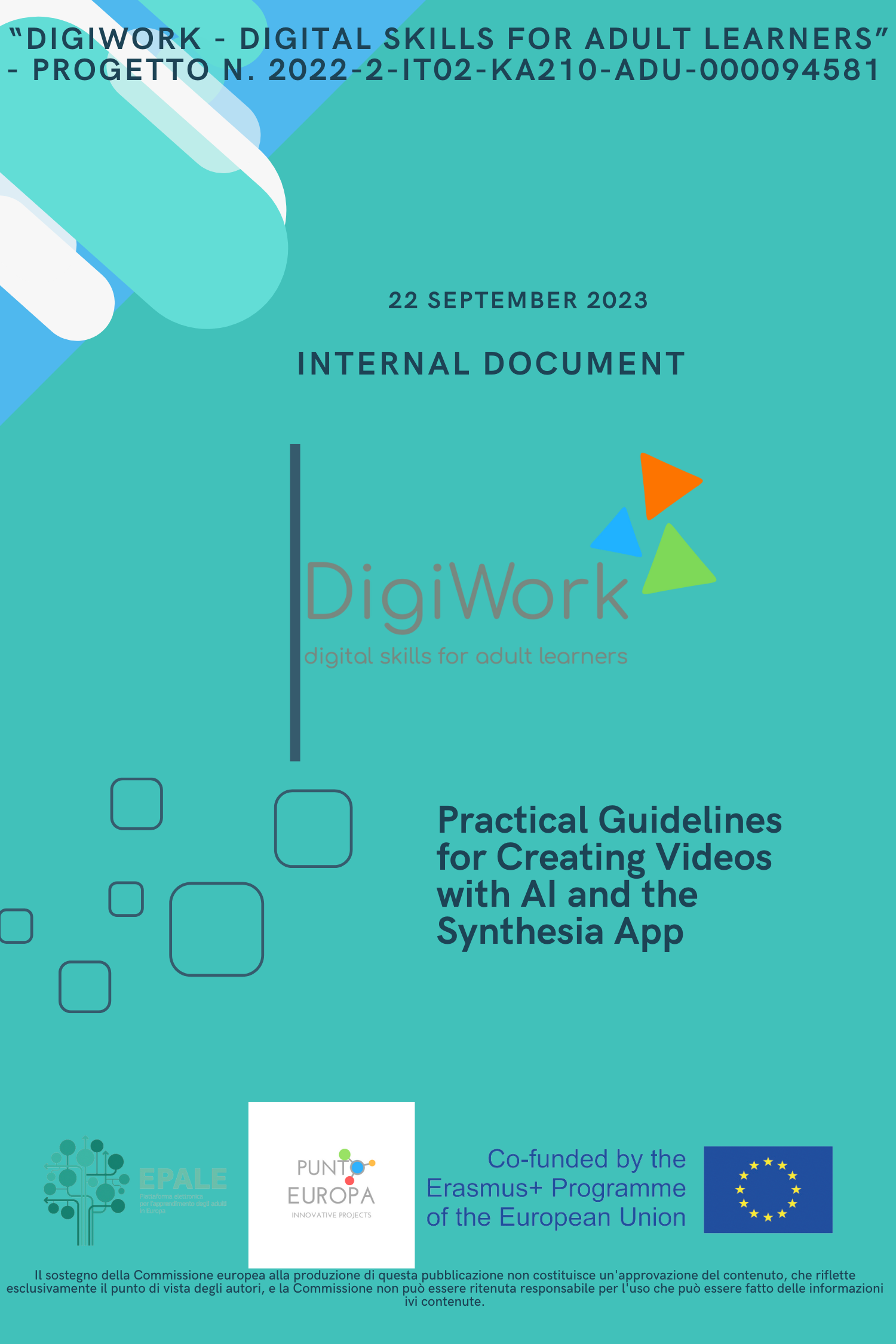Mastering Your Final Project: A Step-by-Step Guide for Adult Learners

Unlock your creativity with DigiWork's practical guide to creating AI-powered videos using Synthesia for your final project!
As part of the DigiWork project, adult learners are tasked with a final project that brings together all the digital skills they’ve acquired throughout the course. This project is not just a test of their learning; it’s an opportunity to create something meaningful and innovative. The final project involves using AI and the Synthesia app to produce professional-quality videos—be it for corporate marketing, educational purposes, or personal storytelling.
Step 1: Planning Your Content
The first and most crucial step in creating your final project is content planning. This involves defining the key message you want to convey and identifying the target audience. Whether your video is intended to market a product, educate an audience, or share a personal narrative, having a clear vision is essential. Start by brainstorming the main ideas and organizing them into a storyboard that outlines the flow of your video. Remember, the ideal video length for maintaining viewer engagement is between 1 and 3 minutes, so plan accordingly.
Step 2: Writing the Script
Your script is the backbone of your video. It should be clear, concise, and tailored to the communication style of your target audience. In Synthesia, the script is particularly important as it will be used to generate the video’s audio and sync with the digital avatar. Write in a straightforward manner, avoiding complex jargon or overly colloquial language that might be challenging for the AI to handle. Keep in mind that while Synthesia’s AI is advanced, it may not capture subtle emotional nuances, so clarity is key.
Step 3: Choosing Your Avatar and Language
Synthesia offers a variety of digital avatars, each suited for different types of content. For professional or educational videos, select a more formal avatar. For more casual content, a relaxed avatar might be more appropriate. Additionally, Synthesia supports multiple languages and accents, allowing you to tailor your video to an international audience if needed. Choose the avatar, language, and accent that best align with your message and audience.
Step 4: Creating the Video
Once your script and avatar are ready, it’s time to bring your project to life. Synthesia’s user-friendly interface will guide you through the process of uploading your script, selecting your avatar, and configuring additional settings such as layout and background. Take advantage of the app’s preview feature to ensure everything is synchronized and meets your expectations. At this stage, you can also add subtitles to enhance accessibility and ensure your message is understood, even without sound.
Step 5: Reviewing and Optimizing
After generating your video, it’s crucial to review it thoroughly. Check the pacing, pronunciation, and overall flow. If you spot any errors or inconsistencies, don’t hesitate to go back and make adjustments to the script or settings. Synthesia allows for quick and easy modifications, making the process iterative and flexible. Consider sharing your video with a small group of peers or mentors for feedback before finalizing it.
Step 6: Publishing and Sharing
Once you’re satisfied with your video, export it in the desired format and prepare it for publication. Whether you’re sharing it on YouTube, social media, or an e-learning platform, make sure to optimize the title, description, and tags to increase its visibility. Your video is now ready to be shared with the world!
Step 7: Ethical Considerations and Future Updates
As you finalize your project, it’s important to consider the ethical implications of using AI and digital avatars. Ensure your video complies with privacy regulations and is transparent about its AI origins. Informing your audience that the video was created using AI builds trust and maintains ethical standards.Remember, AI technologies like Synthesia are constantly evolving. Staying updated with new features and iterations will allow you to improve your video quality and relevance over time.By following these practical steps, adult learners can confidently complete their final project, demonstrating their digital proficiency and creativity. The skills developed through this process will not only fulfill the requirements of the DigiWork program but also prepare learners for future digital challenges in both professional and personal contexts.